Carl Zeiss Touit 32 mm f/1.8
5. Chromatic and spherical aberration
Chromatic aberration
The longitudinal chromatic aberration makes itself felt a bit at the maximum relative aperture – it would be difficult not to notice green-yellow cast of images behind the focus and a bit reddish hue of images before the focus. Fortunately the slight stopping down by one exposure value limits the extent of that problem significantly.
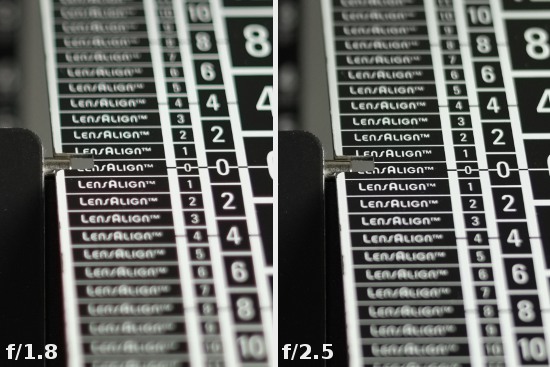 |
Please Support UsIf you enjoy our reviews and articles, and you want us to continue our work please, support our website by donating through PayPal. The funds are going to be used for paying our editorial team, renting servers, and equipping our testing studio; only that way we will be able to continue providing you interesting content for free. |
- - - - - - - - - - - - - - - - - - - - - - - - - - - - - - - - - - - - - - - - - - - - - - - -
The lateral chromatic aberration shouldn’t be an issue for the users of the Zeiss 1.8/32. Near the maximum relative aperture it is low and on stopping down it increases to medium values. What’s interesting, we noticed a slight difference between the aberration values you get when you develop RAW files employing different demosaicing processes. In the files processed by the old VNG algorithm the aberration seems to be a bit lower – it might be caused by the fact that it is masked by colourful artifacts, non-existent in the 3-pass process.
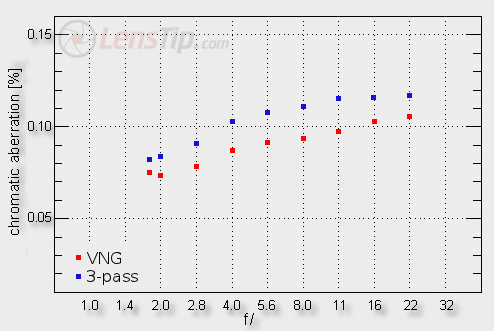
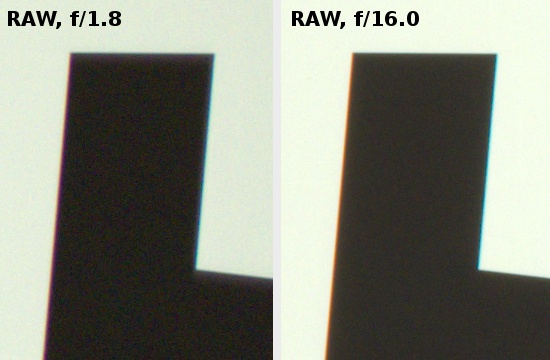 |
Spherical aberration
Circles of light you get by defocusing light points show an almost textbook example of spherical aberration.
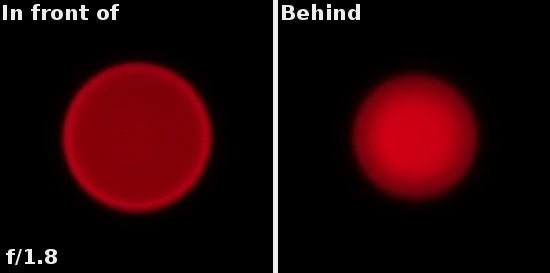
A cross section of the circle in front of the focus features noticeably lighter edges and a bit darker centre. The circle you get behind the focus, for a change, has a lighter centre and darker edges. As you deal here with really a textbook example of this aberration we decided to enliven the text, adding an illustration with the detailed analysis of the problem.
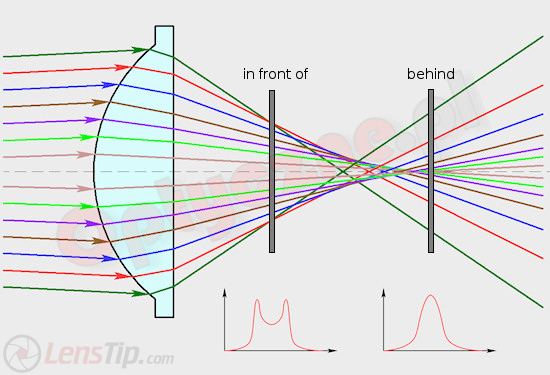
It is clear that, when you position the plane in front of the focus, more light beams are focused near the edge of the circle so in the cross section there are distinct peaks at the ends. Behind the focus, for a change, more light beams intersect in the centre so it is lighter there; the shape of the intensity distribution is similar to the Gaussian distribution (the bell curve).
The spherical aberration manifests itself distinctly also at the maximum relative aperture where you cannot get point-like images of sources of light – every single one of them is surrounded by a weak but noticeable halo like in the photo below.
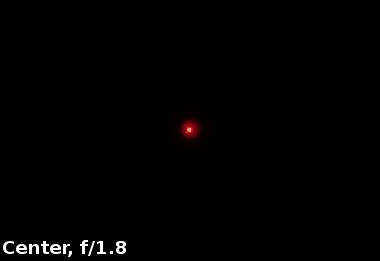
Fortunately the spherical aberration decreases very quickly on stopping down; by f/2.2-2.5 it is practically invisible, so there is no “focus shift” effect.






